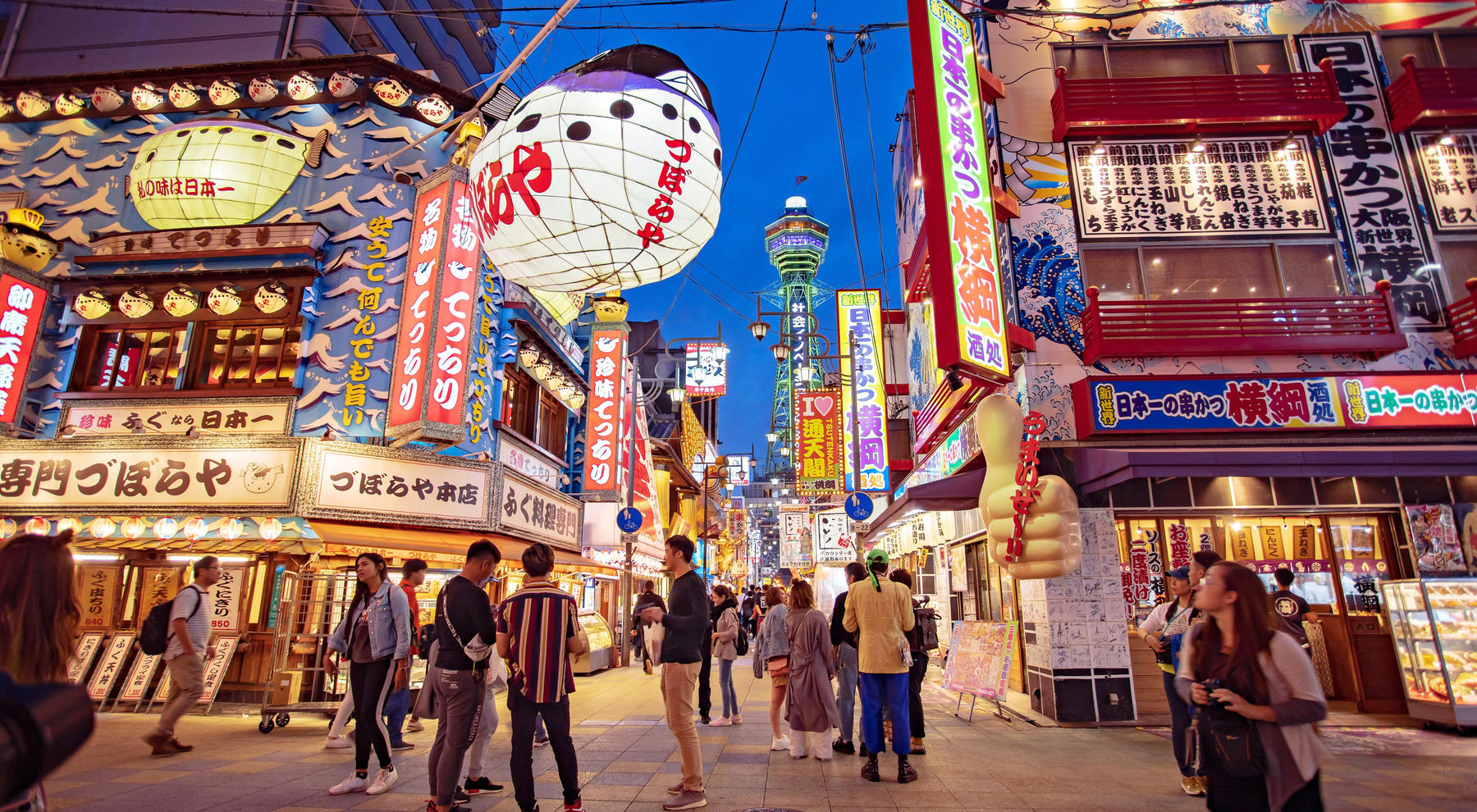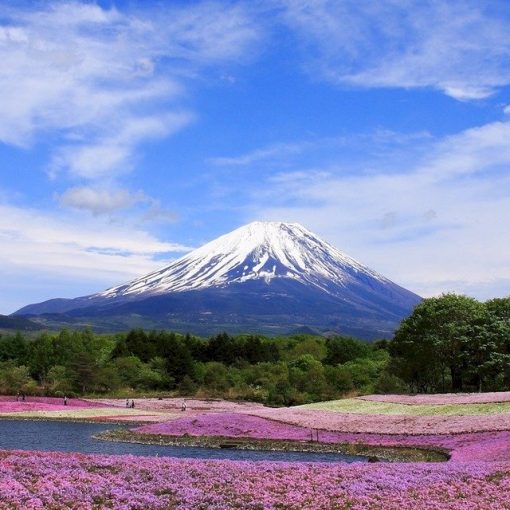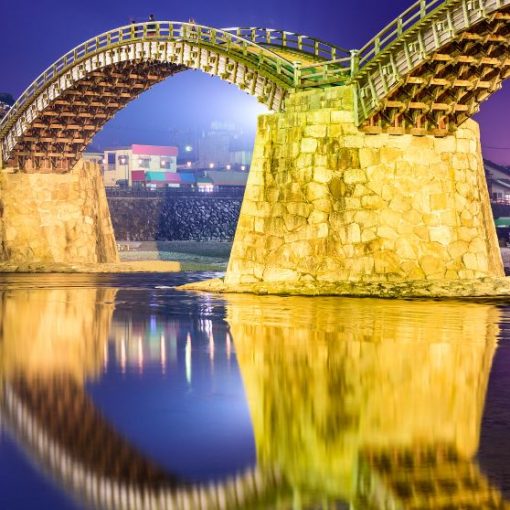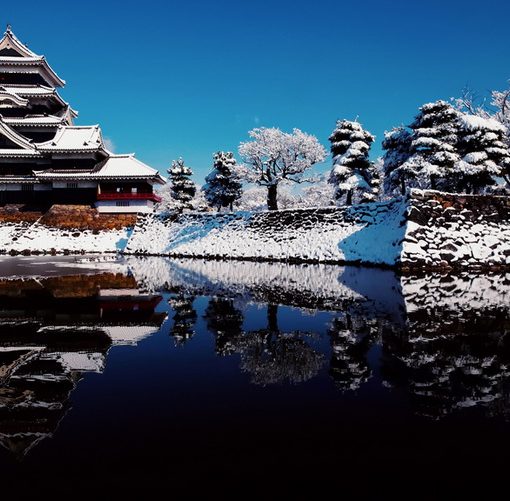Osaka, one of Japan’s largest cities, is located on the south coast of western Honshu at the point where the Yodo River flows into the wide bay of Osaka Bay, which opens into the Pacific Ocean. The city is bounded on one side by the Kiy peninsula and is closed from the inland sea in the west on Avadzhi Island.
Its location in the Yodo Delta, with its network of streams and canals spanned by over a thousand bridges, has deservedly earned Osaka’s nickname: “The Venice of the East.” While Osaka’s origins date back to the mythological early days of the Empire of Japan, today the city is undeniably one of the most modern in Japan, with a futuristic skyline along with countless impressive examples of modern architecture. Its world-class status has been cemented by its many cultural institutions, from its superb museums and art galleries to state-of-the-art entertainment, theater and music venues.

Osaka Castle
Oaska Castle (Ōsaka-jō), completed in 1586 in just three years, was commissioned by the famous Japanese warrior and politician Toyotomi Hideyoshi and at the time was the largest castle in Japan. Nearly all of Hideyoshi’s military commanders were required to contribute stones for its construction, the largest of which was the Iego-Ishi stone near the southern entrance, standing almost six meters high, 14½ meters long and brought by the famous general Kato Kiyomasa from Shodo Island, after Hideyoshi’s defeat in 1615 In the same year, the castle was destroyed, only to be rebuilt by the Tokugawa shoguns for reasons of prestige.
Again destroyed after the fall of the shogunate, the castle was reconstructed to its present form in 1931. Highlights include the five-story, 42-meter main tower with exhibits on the history of the castle and the city, as well as great views of Osaka from its upper floors. Also of interest is Osaka Castle Park, a Hokoku Shrine dedicated to Hideyoshi and his family.
Shitennji Temple
The most famous temple in Osaka, Shitenn-ji, can trace its roots back to 59 AD. and was the first Buddhist temple in Japan. Despite being rebuilt many times over the centuries (the last renovation took place in the 1960s), this beautiful temple remains the oldest religious site to be officially commissioned. Highlights of the tour include the site’s five-story pagoda, as well as a number of other exquisitely designed buildings, including the Golden Pavilion (Kond) with its fine statues and paintings, the Lecture Hall (Kōdō), and a beautiful indoor corridor connecting the site’s three gates. Other buildings of note in the complex include a teaching area, a pharmacy and a hospital, as well as a pleasant garden.
Osaka Aquarium Kaiyukan
Looking a bit like it could be made from giant Lego blocks, the Osaka Kaiyukan Aquarium is well worth exploring. One of the largest such attractions in the world, this walking aquarium takes guests on an exciting tour of a range of marine habitats, including the Pacific Ocean and Antarctica, as well as the Great Barrier Reef and Monterey Bay. A variety of Japanese marine life is also on display, including freshwater species, as well as native reptiles and mammals. All told, the site boasts 27 tanks, the largest of which is nine meters deep and is capable of easily accommodating a large amount of marine life, including manta rays and sharks.
Ferris wheel Tempozan

Providing some of the best views of Osaka, especially in the port area and the Tempozan Harbor Village in which it is located, the massive Tempozan Ferris Wheel is one of the biggest attractions in Asia. At over 112 meters high and with a diameter spanning 100 meters, this huge Ferris wheel has been in operation since 1997 and offers a spectacular 17-minute journey that is especially enjoyable at night when the wheel is lit up in different colors dictated by the weather (orange when sunny weather is predicted, green for clouds and blue for rain). Hot Tip: Thrill-seekers can opt for one of the special “through-bottom” vehicles for an incredible all-round view of Osaka Bay.
Kobu harbor tower
Osaka boasts not one, but two tall towers that have become synonymous with the city. The oldest, Tsutenkaku, is located in the city center and stands on the site of a replica of the Eiffel Tower, which was built in 1912 and destroyed in World War II. The current structure, completed in 1956, still offers some of the best views of Osaka, especially from the observation level on its fifth floor, where you’ll also find the Lucky God Temple. A little further on, on the outskirts of the city, stands the 108-meter red steel tower of Kobe Port. Opened in 1963, this tower boasts an observation deck that offers great views of the city and the Kobe port area. Hot Tip: Both towers are especially pleasing to look at at dusk when they are lit up.




